10 Unforgettable Things to Do in Normandy, France
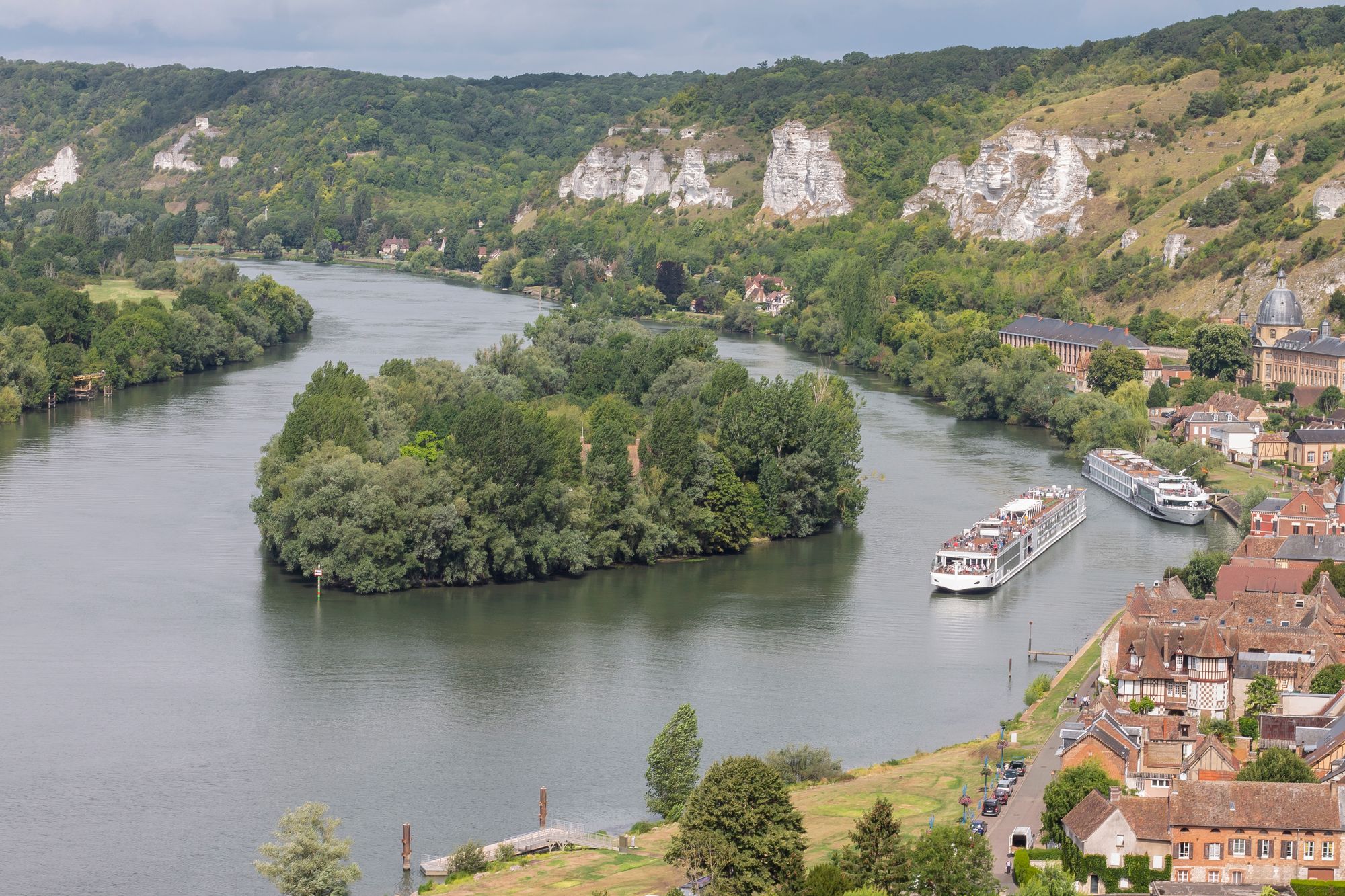
If you're new to France, Normandy is an excellent place to start your journey. Known as the historical Duchy of Normandy, this northern French region is famous for its D-Day beaches.
However, Normandy has much more to offer, such as the iconic Mont-Saint-Michel, the lovely Monet Garden, and the stunning Bayeux Tapestry.
This comprehensive guide highlights ten must-see attractions, including charming villages, picturesque gardens, beautiful chateaus, and delicious cider.
Additionally, we'll provide helpful tips for exploring the region in a campervan and finding the best aires in Normandy.
Bookings: Some of the links in this article are affiliate links. This means that if you choose to make a booking, we will receive a small commission at no extra cost to you. Thank You!
Top 10 things to do in Normandy - a mini guide
We have spent a glorious month in Normandy and have created a valuable guide for you. Our trip included exploring charming towns, cities, and the picturesque French countryside.
We travelled around the region in our van conversion and discovered some great places to stay with the help of resources we will share later in this guide.
Here are our top 10 recommendations for things to do in Normandy.
1. Soak up Impressionism at Claude Monet’s Garden
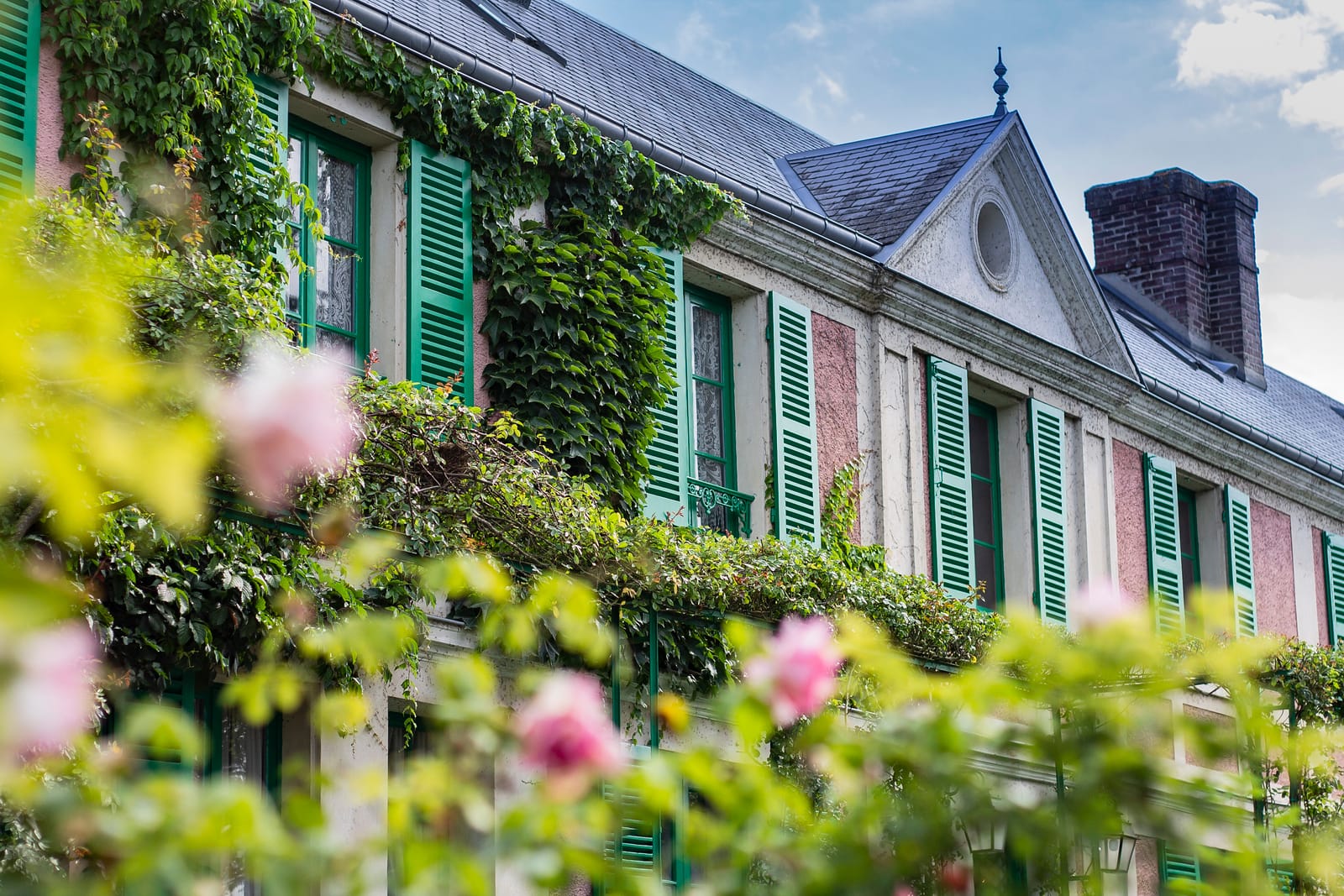
One of the best things to do in Normandy is to visit the Monet House and Garden, a highlight of the area. It is located in the charming village of Giverny, and it is easy to take a day trip from Paris.

The house, flower garden and famous water lily garden have been lovingly restored after suffering severe damage during WWII, making them a delight to explore.
While Monet's garden is beautiful throughout the year, spring is the best time to visit. In April, you can see tulips, forget-me-nots, and daffodils; in May, you'll be greeted by pink rhododendrons and violet wisteria. If you love roses, plan your visit in the summertime. Monet's two-story artist's house overlooking Clos Normand is also worth exploring.
Don't miss the Église Sainte-Radegonde de Giverny church and Claude Monet's modest grave in the small cemetery beside it.
We suggest exploring Giverny before or after the garden's opening hours to experience the peacefulness of the village and appreciate its beauty. This way, you are more likely to have the small church and cemetery to yourself.
2. Catch the sunset at Saint Mount Michael
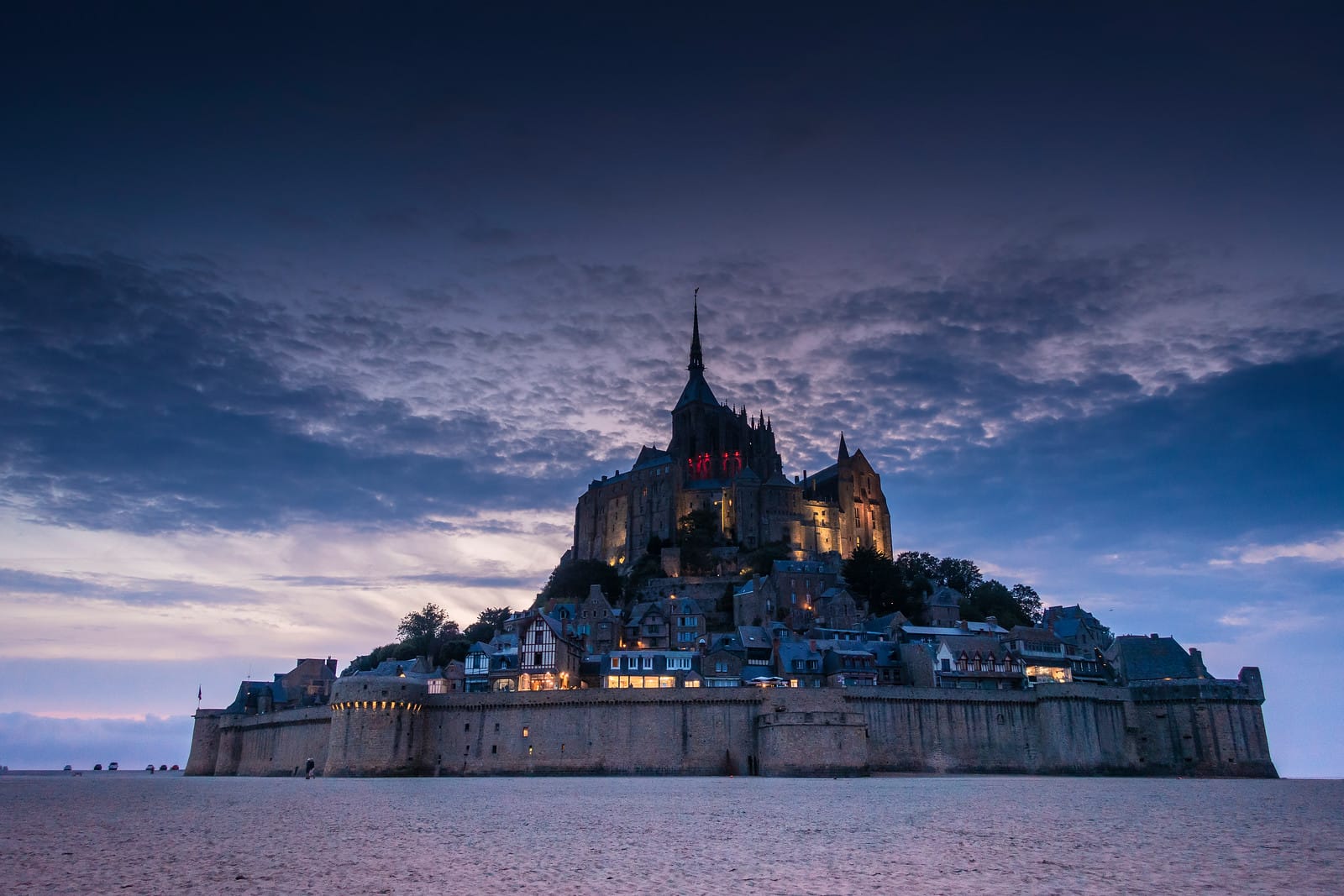
Pictured in the one-thousand-year-old Bayeux Tapestry, Saint Mount Michael (Mont-Saint-Michel) is one of the most extraordinary places in Normandy, France.
Founded by an Irish hermit, Saint Michael's Mount has seen centuries of change since it was first constructed here in the 8th century.
Located on the tidal island where Brittany and Normandy merge, it's a mesmerising UNESCO World Heritage Site. Eternally popular with visitors year-round, it's the second most-visited site in Normandy and France after the Eiffel Tower in Paris.
Thanks to the newly constructed bridge connecting the island to the mainland, this Normandy attraction welcomes over three million visitors annually. And although the inside of the fortress can feel a bit like Disneyland, the views from the top are worth the climb.
One of the biggest attractions inside the walls is the La Mère Poulard restaurant opened in 1888. Annette Poulard, the founder of the original Inn, devoted her life to feeding pilgrims and visitors at the Mont Saint Michel.
Alongside many other French dishes, Annette invented the famous puff omelette she cooked over the fire in the fireplace. If you have a spare €39, you too can try it at the restaurant.
But the best part of Mont Saint Michel is the location itself and the external walls reflecting in the water surrounding the mount. The reflection and sometimes spooky fog encircling the peak make for fantastic photography conditions.
If you can time your visit with low tide at sunset, you can take a smashing shot of the iconic fortress in all its glory from the beach.
How to get to Mont-Saint-Michel from Paris
It’s easy to reach Mont-Saint-Michel in Normandy by car, train or campervan.
The closest train station to Mont-Saint-Michel is Pontorson and can be accessed from Paris Saint-Lazare and Paris Montparnasse train stations.
From Saint-Lazare - take a train going to Caen. From Caen, change for the TER (Transport Express Régional) train to Pontorson and then catch a shuttle bus to the mount.
From Paris Montparnasse, you’ll need to take a train to Granville and change at Folligny. From here, you can get a shuttle bus as above.
Alternatively, you can book a day trip to Mont-Saint-Michel from Paris to take the hassle out of your day.
Accessing Mont Saint Michel
The parking lot is located around 1.5 miles away from the mount to preserve the natural surroundings. But you can walk or take a modern shuttle bus, Passeurs, for easy access.
Top tips for visiting Mont Saint Michel in a campervan
If you are touring Normandy in a campervan, seek out Maison Jehan Michel, a little cider shop along the main road towards Mont Saint Michel. From here, you are within walking distance of the famous Normandy attraction.
In exchange for buying their delicious local produce, you can park your motorhome behind the shop with a view of the mount! Be sure to pick up their excellent pear cider, mouth-watering chocolate, and pear spread, Confiture de Poire au Chocolat.
Otherwise, a designated campervan stop near Mont Saint Michel called Aire du Mont Saint Michel costs €16.50 per night, including all facilities.
Is it worth going to Mont St Michel?
Yes, it’s worth ticking off one of the world-renowned places to visit in Normandy. If not for the history and puff omelette, then for the brilliant photo opportunities at any time of day.
3. Tour Honfleur like a local
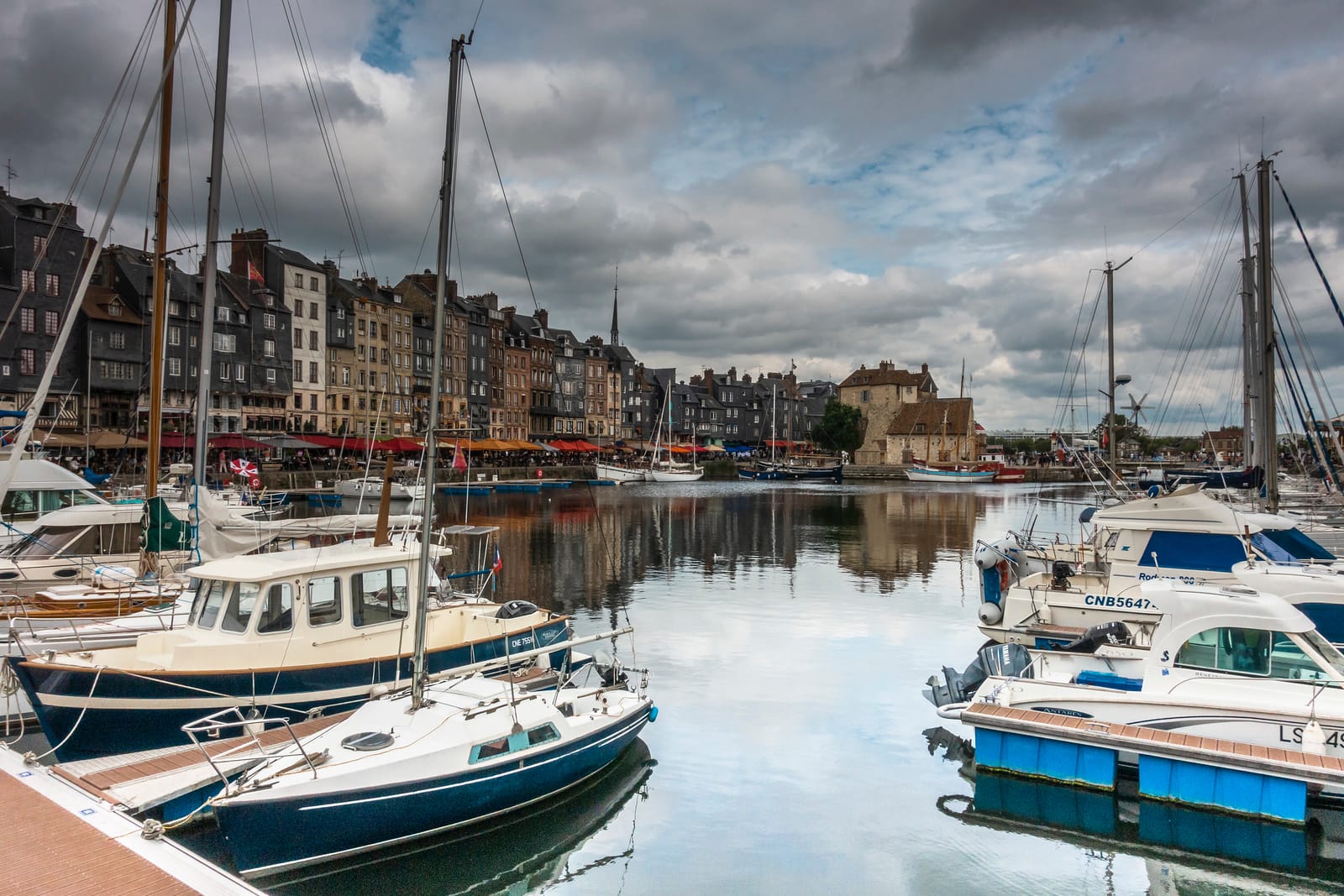
Characterised by the Vieux-Bassin lined with 16-18 century colourful townhouses, Honfleur is a busy medieval harbour town on the estuary where the Seine river meets the English Channel. The old port is the most picturesque part of the town and therefore crammed with restaurants, galleries, and other tourist attractions.
Despite the business, the seaside town is charming and worth a visit. Once you've taken in the beauty of the old port, take the path leading towards the beach through Jardine des Personalites. You'll find the park brimming with stone busts of various personalities, making strolling fun and educational.
Other things to do in Honfleur include exploring medieval churches such as Saint Catherine's Church and Notre Dame de Grace. Also, pop into the Eugene Boudin museum to learn more about the famous French painter and Monet's friend.
To go beyond the touristy spots, explore Honfleur with a local, who'll show you Honfleur's best-kept secrets and take you to the best food spots.
Tips for motorhome travellers staying overnight in Honfleur
Aire de Camping-car Honfleur, a large motorhome camping site is right next to the fairground, around 800 m from the old harbour.
It has some 200 motorhome spaces with limited facilities and costs around €11 per campervan per night—max stay - 12 hours.
We stayed there overnight when visiting Honfleur, and despite the site being quite busy with campervans, we had a peaceful night's sleep.
4. Discover Christian Dior’s childhood home
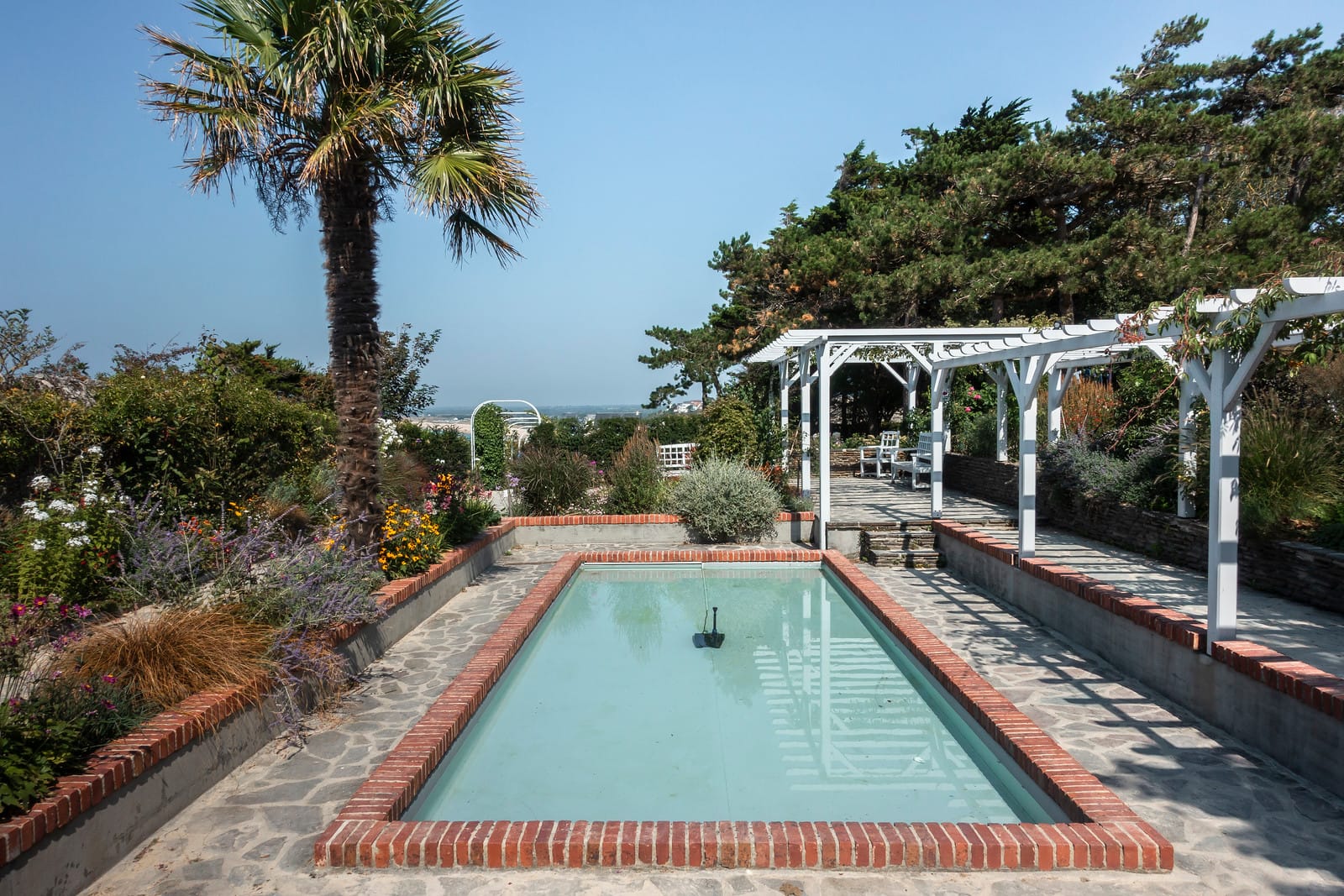
For more unusual things to do in Normandy, visit the former Dior family home in Granville. Unless you love everything Dior, we're not recommending going out of your way to see it. But if you are nearby, pop in for a quick visit. The location is fabulous.
For €7, you can enter the Belle Epoque era house and enjoy the small but tasteful museum displaying haute couture and photos celebrating Dior's life.
The best part here is the outdoors. Free of charge, you can wander around Dior's childhood home's elegant gardens and enjoy views stretching across the sea to Jersey on a clear day. There's also a delightful tea room serving delicious French patisserie.
5. Admire the ancient Bayeux Tapestry

You can't leave Normandy without seeing Bayeux Tapestry. It's the one-thousand-year-old and 68-meter-long embroidered cloth depicting the conquest of England by William, the Duke of Normandy, in 1066.
It's pretty unbelievable that embroidery as old as this is still intact despite being used as a cover for military wagons during the French revolution.
Seeing the embroidery displayed at the Musée de la Tapisserie de Bayeux in Bayeux is one of the absolute must-do things in Normandy.
As you slowly move along the glass display, listening to the audio guide, scene after scene, stitched exquisitely with the colourful wool yarn, unfolds in front of your eyes (you're not allowed to take pictures of the tapestry).
In total, 70 scenes tell the most famous story in British history, the battle of Hastings and the events leading up to the legendary battle.
Arriving at the Musée de la Tapisserie de Bayeux as early as possible gives you the best chance of beating the crowds, so plan an early morning visit.
Other things to do in Bayeux include visiting the magnificent gothic-style Cathedrale Notre-Dame, especially the atmospheric crypts. They look pretty spooky in the evening light.
For a relaxing stroll, head to Bayeux Botanical Garden, home to 400 trees and the natural monument, 'weeping beech'. The park is free to enter.
The Memorial Museum of Battle of Normandy is home to numerous military memorabilia from the largest seaborne invasion in history if you're up for learning more about D-Day.
If you have enough time, visit Bayeux War Cemetery with its 4,500 graves, mostly British soldiers. It's also just a short drive from Bayeux to Normandy landing beaches.
Top tips for arriving to Bayeux in a campervan
Just outside the centre, across the park from the cathedral, there’s a parking lot where you can park overnight.
We arrived at Bayeux the night before and were first in line to enjoy an unobstructed and uninterrupted view of the tapestry.
6. Visit the Landing Beaches in Normandy

Often referred to as the D-Day beaches, Omaha, Sword, Utah, Gold, and Juno are the main landings in Normandy used for the biggest and bloodiest Allied seaborne invasion into Nazi-occupied territory.
On 6 June 1944, British, Canadian and American troops landed on the shores here, initiating operation Overlord. Being close to England, easy to reach and less well-defended, these five beaches were perfect for the allied operation.
According to the history books, Omaha beach witnessed the goriest of all the fights. Over 2,000 American troops died or went missing due to an underestimation of the number of German soldiers on the beach at the time of the attack.
Overlooking the beach, you can now visit the Normandy American Cemetery and Memorial, created to honour the US troops who lost their lives during World War II—more on that below.
Most of the beaches today have some form of memorabilia or visitor centres to commemorate the D-Day landings in Normandy.
Gold Beach has excellent panoramic views, while Sword Beach is lined with beautiful villas built in Anglo-Norman architecture right on the beach.
You can get access to museums and have a full day exploring the Normandy D-Day landing beaches with this top-rated tour.
7. Honour the troops at the American Cemetery and Memorial
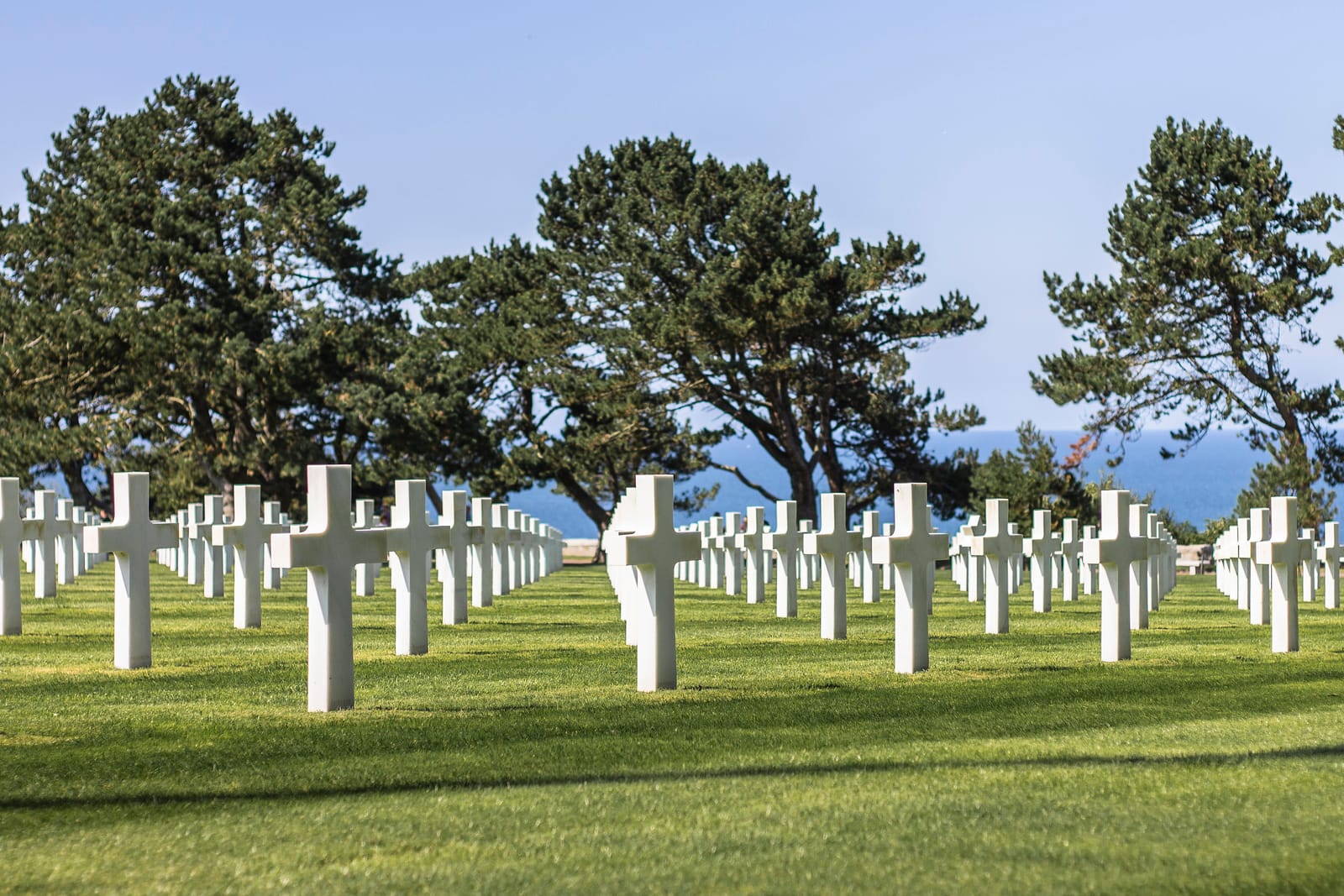
As you explore the picture-perfect French villages along the coast of Normandy, schedule a quick stop at Colleville-Sur-Mer. Here, overlooking Omaha Beach, you’ll find a heart-clenching yet stunning cemetery honouring American troops who lost their lives during WWII.
The cemetery is home to 9,388 graves marked with identical white marble crosses and Stars of David for the Jewish soldiers. Walking along the cemetery is one of the most peaceful things to do in Normandy.
The main memorial building in the cemetery displays maps of landings on the Normandy beaches and military operations. You’ll also see an American flag which, at certain times, gets folded away as a sign of respect to all the people who fought in the war.
The cemetery, run by the American Battle Monuments Commission (ABMC), is a lovely place to visit, especially because you can see the beach from the top of the site. The symmetrical rows of marble headstones look even more impressive against the backdrop of the deep blue sea.
Tips for visiting the memorial in a campervan
A large free car park By the main entrance can accommodate even the largest motorhomes if you are touring Normandy in one.
8. Explore Rouen’s best-kept secrets
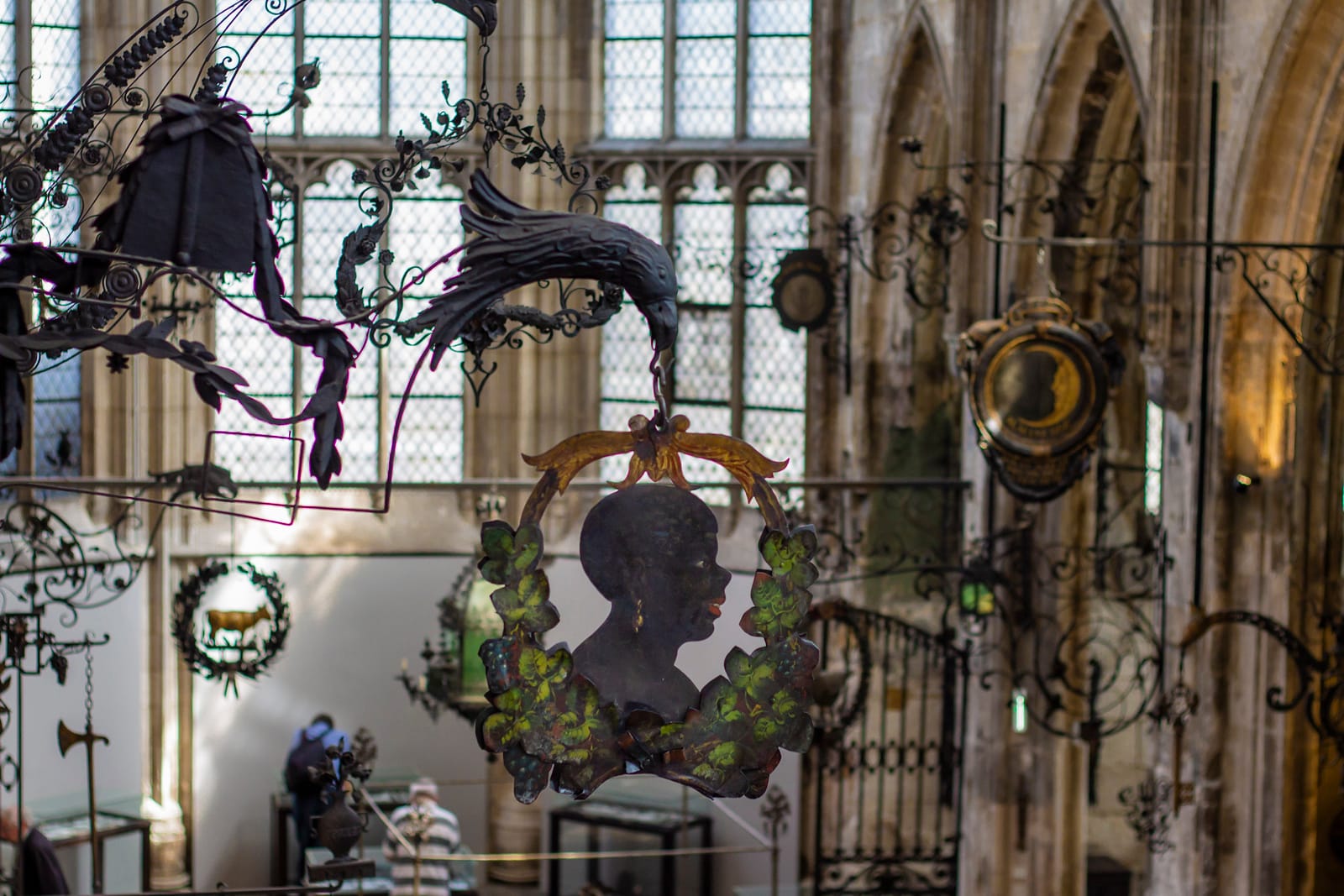
There's so much to see and do in Rouen, with some sights more unusual than others. It's where you can find the spot where Joan of Arc was burned at the stake, look for King Richard's Mummified Heart, sip coffee, and enjoy French food.

With the fine arts museum and the spires of Notre Dame of Rouen, the capital of Normandy is often referred to as mini Paris.
Alongside its charming old town, gothic churches and Parisian-like cafes, you'll also find some rather unusual attractions in the city, making it one of the most interesting places to visit in Normandy in one day.
During your visit, pop into Musée Le Secq des Tournelles. Housed in an abandoned church, the atmospheric museum showcases a collection of over 1,400 art pieces, all made from wrought iron.
One of the last examples of a medieval cemetery, the Medieval Plague Cemetery, is another unusual place to see in Rouen. But if you want to wander outside the pristine touristy streets of old Rouen, head to Jardin des Plantes on the city's south side.
Located an hour away from the French capital and easily accessible by train, Rouen makes a relaxed day trip from Paris.
9. Go back in time at Château Gaillard
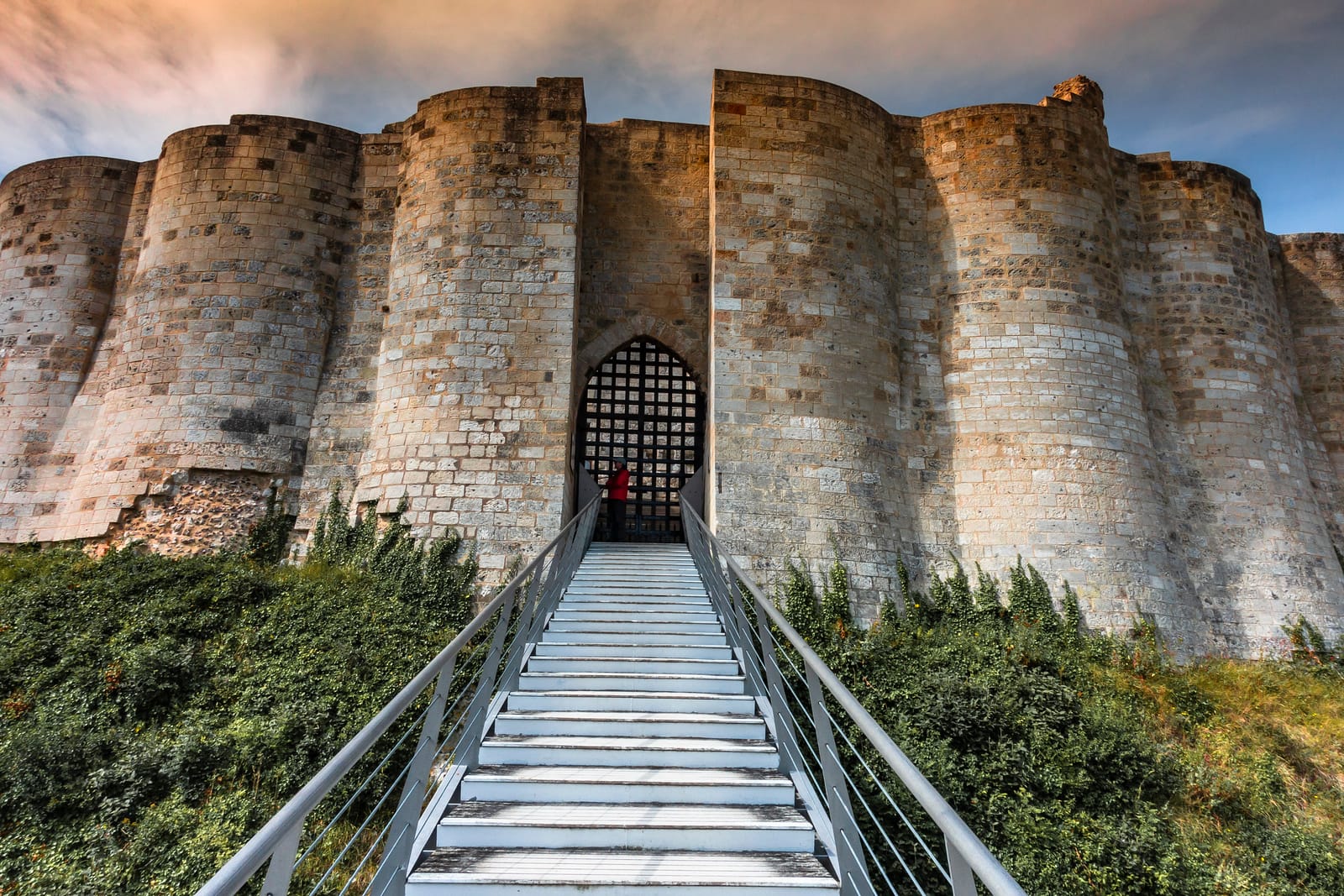
On the way to Monet Garden, stop at the commune of Les Andelys, home of classical French Baroque painter Nicolas Poussin. While the town is not the most inspiring, the nature surrounding it is truly picturesque.
Overlooking the river Seine, the imposing Château Gaillard is said to have been built in just two years by Richard the Lion-Heart, King of England and the Duke of Normandy.
Considered a military masterpiece, the 12th-century ruined medieval castle was originally constructed to guard Normandy against Philippe Auguste, the King of France.
However, a year after the castle was built, the Duke of Normandy was shot by a crossbow and died from the infected wound. The Château was passed on to King John, who was too weak to stand against King Philippe. From then on, the castle passed between various owners until it eventually fell into ruin.
Surrounded by a large moat, visiting Château Gaillard is undoubtedly one of the most impressive things to do in Normandy. It's worth a quick detour if you are after some good travel photo opportunities.
10. Drink apple cider on the picturesque cider trail
With so many things to do in Normandy, you'll need a break to catch your breath and quench your thirst. One thing is for sure; you won't be short of cider-tasting opportunities when travelling around Normandy.
We've learnt during our explorations - not many things can be as refreshing as a glass of crisp apple or pear cider when touring around the picturesque French countryside.
To try some, pop into a supermarket and buy whatever catches your eye or visit one of the numerous calvados distilleries.
East of Caen, you'll find a circular cider walk called The Cider Trail, which takes you through delightful countryside roads leading to many distilleries which welcome visitors.
Start with Cambremer village and see how many more you can visit. There are over twenty distilleries along the trail to enjoy, so take it easy and pace yourself!
Tips for travelling around Normandy
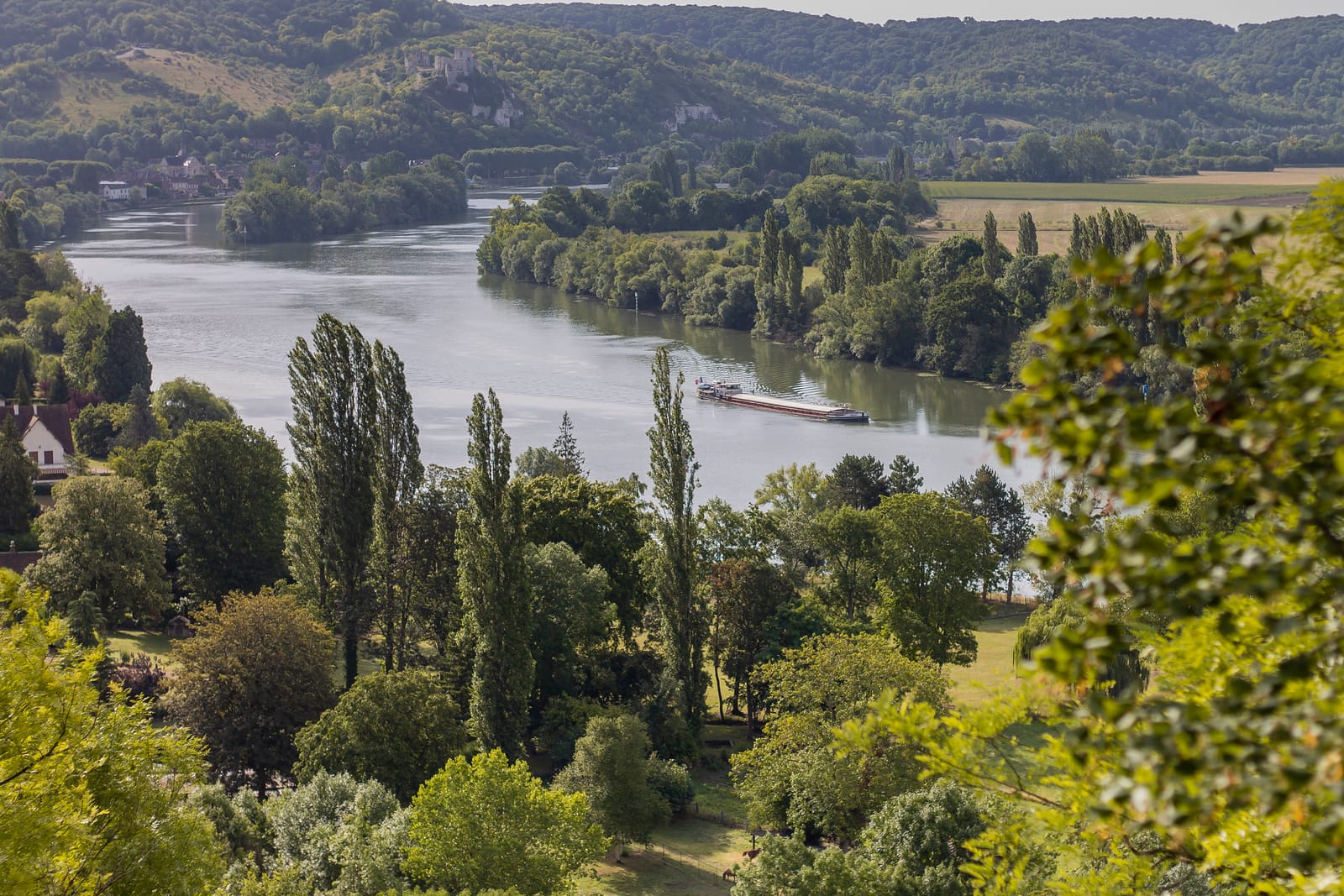
Where to stay in Normandy
There is no shortage of fantastic accommodation in Normandy. Whether you prefer a city apartment, luxury hotel or countryside villa, you’ll find many options to suit your budget via the trusted Booking.com.
The best way to tour Normandy
France is well set up for campervans; therefore, one of the best ways to tour Normandy is in a campervan or motorhome. There are many Aires around the region where you can park your campervan for free or for a small charge. Some luxurious private aires may charge a small fee for water and showers.
The best thing about exploring France in a campervan is seeing how beautiful the French countryside is. Plus, you can stop at the many little villages with top-class boulangeries and patisseries whenever you feel peckish.
Throughout our travels around Normandy in our van conversion, we stayed in many cute villages, making our trip memorable. We used the All the Aires France guidebook and the Park4night mobile app to find the best camping car spots.
Avoiding the toll roads
One thing you need to be aware of when touring Normandy is the toll roads which can soon get expensive if you have a busy itinerary.
We used Google maps navigation to avoid the toll roads and selected the ‘avoid tolls’ option. This can increase your total journey time a little, but the savings can be substantial if you are in Normandy for several days.


